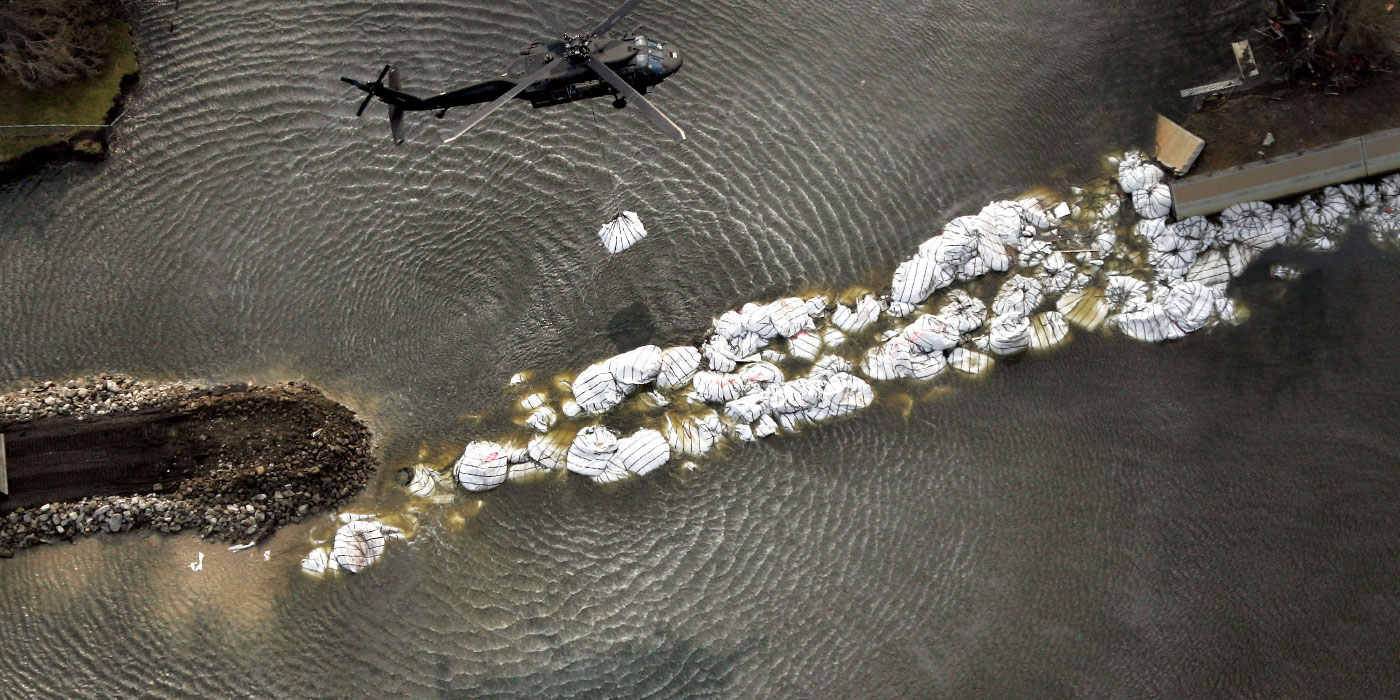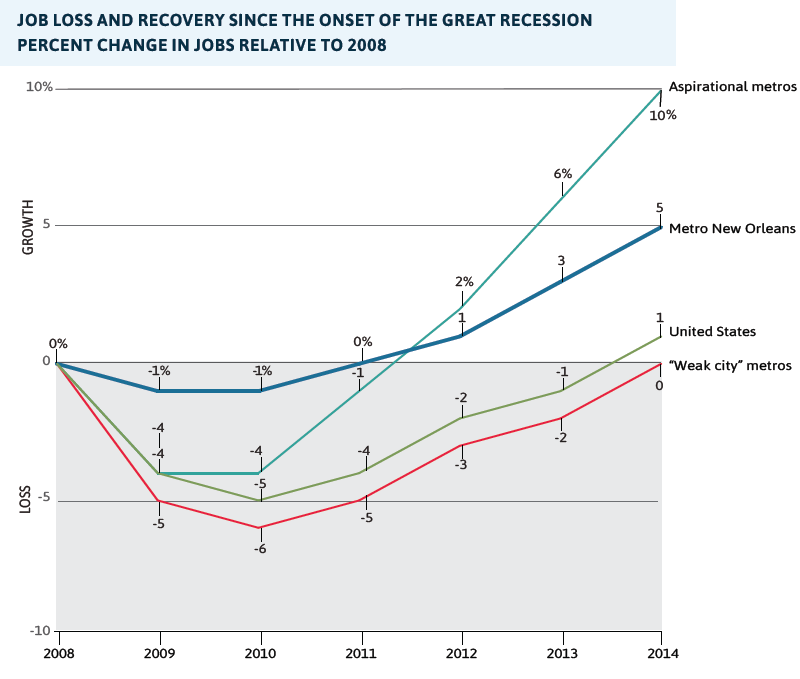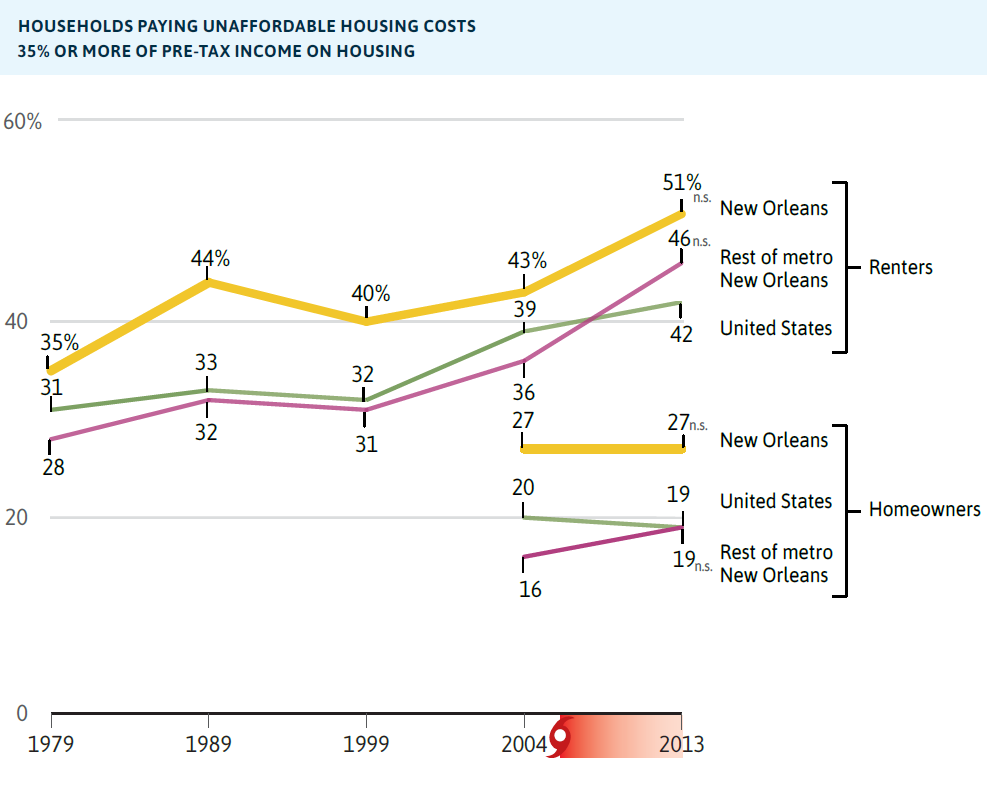
<p>A military helicopter drops a sandbag as work continues to repair the 17th Street canal levee in this Monday, Sept. 5, 2005 In New Orleans. Photo by David J. Phillip/AP</p>
The losses of life and livelihood due to Hurricane Katrina were a wake-up call for the country, as we collectively realized that long-term social and economic stresses in places like Orleans Parish exacerbate—and in some cases create—the disasters associated with natural hazards.
As we look toward the 10-year post-Katrina milestone, we need to constantly remind ourselves of these basic lessons. The “perfect storm” is the confluence of environmental, social, economic, and political storm fronts.
|
Disasters |
= |
Natural, environmental, and human hazards
|
X |
Social, economic, and political stressors
|
The social and the economic shape—and are shaped by—the physical. Seems obvious, but it took a disaster of Katrina’s magnitude for us to rethink disaster policy in this country.
Despite a century of increasing federal funding for disaster recovery (and broadening numbers of state requests for federal disaster declarations), we’re realizing that funding mitigation, preparedness, and comprehensive planning could help the nation weather disasters better—and more cost-effectively.
Better and more strategic actions before a disaster make for better outcomes after. Lately, lots of folks call this line of thinking “resilience.”
What exactly is resilience? How does it fit into the disaster equation?
In contemporary parlance, resilience is the ability to bounce back—and hopefully better—from setbacks. Resilience traditionally was measured as a collection of actions taken after a shock or disaster. This meant making sure that the recovery process was faster and more comprehensive, and led to more than just rebuilding what had been before (which often wasn’t so great to begin with). The logic in this definition is that you can’t “act resiliently” until you’re tested, and a core lesson from Katrina was that a recovery is a terrible thing to waste.
Much of the recent hype around resilience has shifted the focus to before disasters strike—making resilience a state of being, a constant state of preparation and flux. The logic is that you can “be resilient” as a condition before any shocks come to your system.
Resilience is described as a contemporary paradigm shift, but several of its components affect longstanding practices in the fields of city planning, emergency management, soil and water sciences, and civil engineering.
No matter how you define resilience, a fundamental belief in both is that social, economic, and political conditions and physical realities are linked now and in the future. Resilience involves reducing both factors in the equation, but especially the social, economic, and political stressors.
What are communities doing differently?
The hardest thing about adopting new strategies is re-learning what you thought you knew. As I’ve said before, communities are facing bigger disasters and more responsibilities for addressing them, but they don’t always know what they’re planning for. But places with different politics, vulnerabilities, and contexts are taking action.
Communities like Baltimore are rearranging their traditional long-term planning processes. Southeast Florida jurisdictions at all points on the political spectrum are finding ways to protect assets and lives. In an almost unheard-of regulatory action, San Francisco has mandated retrofits of older multifamily properties known to be at particular risk of earthquake damage.
This movement is getting some gentle national nudging from FEMA, which is integrating resilience into mitigation resources, and HUD, which is using its disaster recovery funding to build resilience through competitions like Rebuild by Design and the National Disaster Resilience Competition. Philanthropy has also upped the ante.
But there are still gaps in different places and in current plans. Many still don’t rely sufficiently on sound scientific knowledge and demographic data. Others lack a robust engagement process with all residents. Most important, much of the resilience work in communities so far has only been in plans—not actual implementation.
So, what is New Orleans doing—and is the city more resilient now?
If defining resilience as the speed and quality of recovery, it’s a loaded question that would be answered very differently by displaced residents now living in Houston, by city leaders proclaiming the city’s economic renaissance, by the parents of kids dealing with the effects of gaps in schooling and services, and by the engineers who are rebuilding the city’s protection systems.
If defining resilience as a state of being, our National Neighborhood Indicators Project partners at the Data Center in New Orleans have some robust insights. The Data Center developed the New Orleans Index to track recovery since Katrina and Rita and frame the policy discussion about the city’s stressors.
The index shows a mixed resilience bag, economically and socially. On the plus side, there has been extensive job growth, particularly in innovative industries like water management and power generation. But the disparity in incomes between black and white households is 54 percent, compared with 40 percent nationally.


Tracking the trends between the city and surrounding parishes shows that poverty rates are increasing in the suburbs as housing affordability decreases throughout the region.


The people of New Orleans are the main characters in the story of resilience. No matter how you define it, the story must continue to be told. As the Data Center writes in its report, “New Orleans has a unique opportunity this August to both celebrate hard-earned successes and continue to confront systemic challenges” as it writes more chapters.
On Monday, August 24, The Atlantic will mark the 10-year anniversary of Hurricane Katrina by bringing together hundreds of people for a meaningful and productive dialogue. This event has been organized with Urban Institute experts who have studied the Katrina recovery effort and its effects on the changing national approach to disaster policy ever since—an approach that increasingly considers social, economic, political, and environmental perspectives. Please tune in here to watch the live broadcast beginning at 10 am EST.
This post is the second of a four-part series commemorating the 10-year milestone of Katrina’s landfall on Gulf Coast. A previous post focused on the problems associated with looking at the 10-year mark as a single moment in New Orleans’ history. Future posts will focus on the current economic and political challenges facing US disaster preparation, and the nature of future disasters.
Let’s build a future where everyone, everywhere has the opportunity and power to thrive
Urban is more determined than ever to partner with changemakers to unlock opportunities that give people across the country a fair shot at reaching their fullest potential. Invest in Urban to power this type of work.